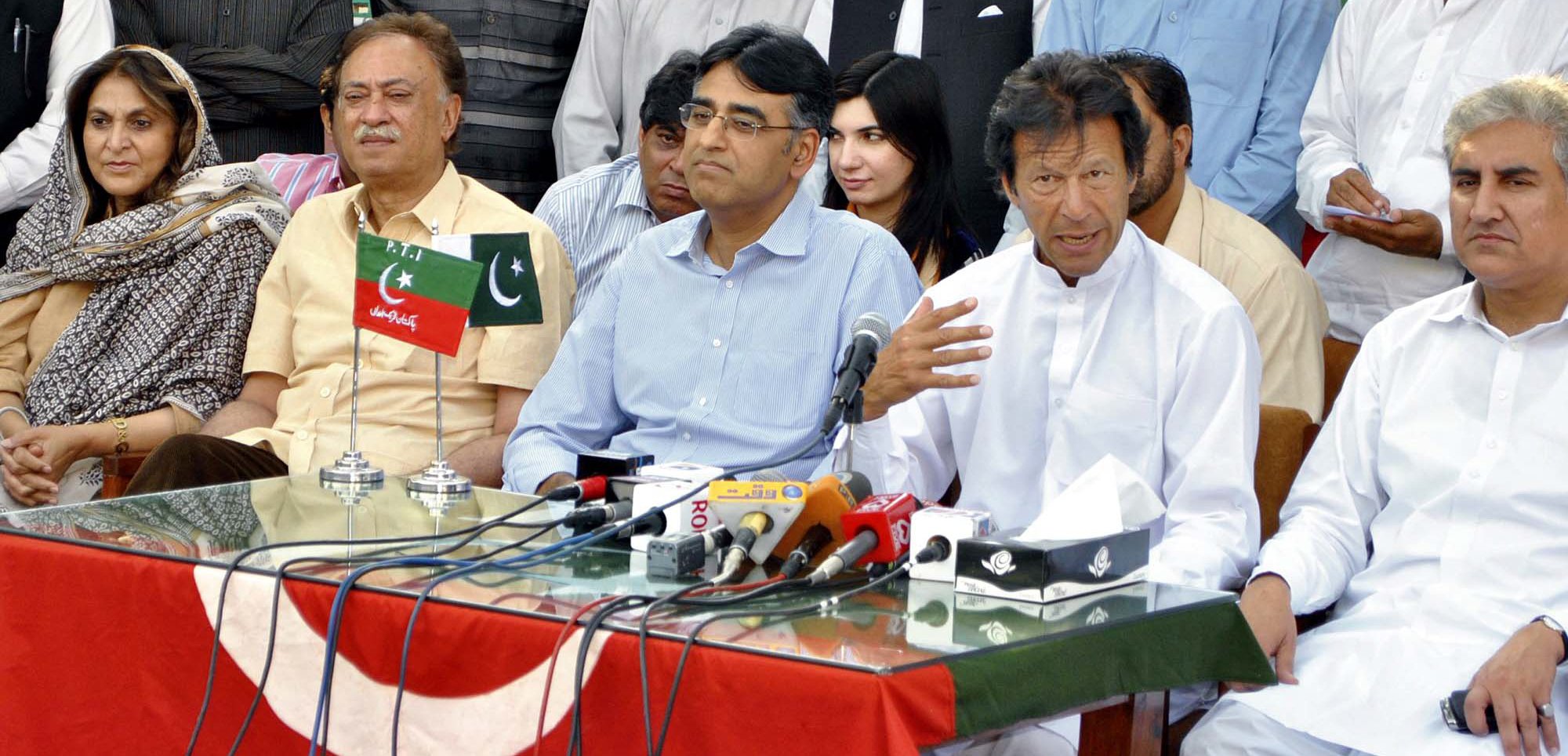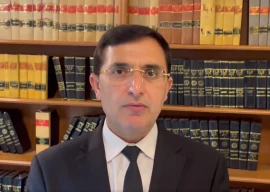
He was warned that the country’s foreign currency reserves would again fall below $9 billion mark soon and budget deficit trends were also not positive.
Umar, likely to become the 35th federal minister for finance, held a one-on-one meeting with Caretaker Finance Minister Dr Shamshad Akhtar, who briefed him about the latest developments on the economic front.
Economic policies and politics to be separated: Asad Umar
The meeting was held a day after Umar met with the media and described the current state of the economy as “dire”. Before the meeting, he briefly met with all senior officers of the ministry.
In his media briefing, the corporate executive-turned-politician described Pakistan’s external sector’s performance “far worse than five years ago” but still manageable.
Umar did not disclose the details of his interaction with Dr Shamshad but said that he “discussed cricket with Dr Shamshad Akhtar”.
However, sources in the Ministry of Finance said that the interim finance minister gave a detailed briefing on the economic indicators for FY2017-18 and a possible strategy to deal with those issues.
Umar, sources said, was informed about the issues related to the Financial Action Task Force (FATF) and the role the caretaker minister played in this regard.
He was reportedly informed that Pakistan’s gross forex reserves would slip below $9 billion by the end of September even after securing a $2 billion official inflow from China and arranging $1.4 billion commercial loans over the past two months.
The assessment was in line with Umar’s opinion. He is reported to have said that the PTI government would have to make crucial decisions about handling the external sector challenges before the end of September.
The would-be-finance minister was informed that forex reveres were expected to remain around $10 billion by the end of this month, the sources said.
After the Chinese injection of $2 billion, the gross official reserves had bounced back to over $10.4 billion by the end of July.
The caretaker finance minister is also said to have informed him about the fiscal situation, which Umar had already described as being unsustainable.
He was told that over the previous fiscal year (2017-18), budget deficit increased to 6.8% of GDP or Rs2.3 trillion.
In absolute terms, it was the highest-ever budget deficit recorded in the country’s history.
The previous PML-N government had set the budget deficit target at 4.1% of GDP, which had been breached by a wide margin.
Historically, the budget deficit and current account deficit were major reasons behind seeking bailout packages from the IMF.
Sources said the caretaker finance minister favoured seeking an IMF bailout package.
Umar was also briefed about fiscal trends witnessed in the current fiscal year.
For this year, the last parliament had approved a budget deficit target of 4.9% of GDP or Rs1.9 trillion. But, Umar was informed that initial trends were not positive.
The budget deficit in the first month of the new fiscal year was close to Rs150 billion or 0.4% of GDP, significantly higher than the one recorded in the same month of the last fiscal year.
Higher interest payments were said to be the main reason for excessive spending in July, sources said.
They said that interest payments in July alone amounted to two-thirds of the total spending, indicating that controlling current expenditures would be an uphill task for the PTI government.
The last National Assembly had sanctioned Rs1.62 trillion for debt servicing in the ongoing fiscal year and about 15% of that has already been consumed in a single month, sources said.
The caretaker finance minister also informed Umar about the steps she had taken to ‘contain’ expenditures and correct macroeconomic imbalances, said sources.
US should worry about paying off their debt to China, says Asad Umar
They said she listed increase in interest rates and devaluation of the rupee as measures to improve the balance of payment situation.
Another challenge that Umar will have to face is building a good team at the Ministry of Finance.
He might not have been briefed about that but almost all additional finance secretaries had either gone on leave or were planning to take long leaves.
Those include additional secretaries dealing with human resource management, budget, internal finance and external finance.



1735040357-0/Untitled-(100)1735040357-0-165x106.webp)



1726732405-0/Express-Tribune-Web-(15)1726732405-0-270x192.webp)



1734899716-0/image-(15)1734899716-0-270x192.webp)

1732012115-0/Untitled-design-(14)1732012115-0-270x192.webp)









COMMENTS (5)
Comments are moderated and generally will be posted if they are on-topic and not abusive.
For more information, please see our Comments FAQ